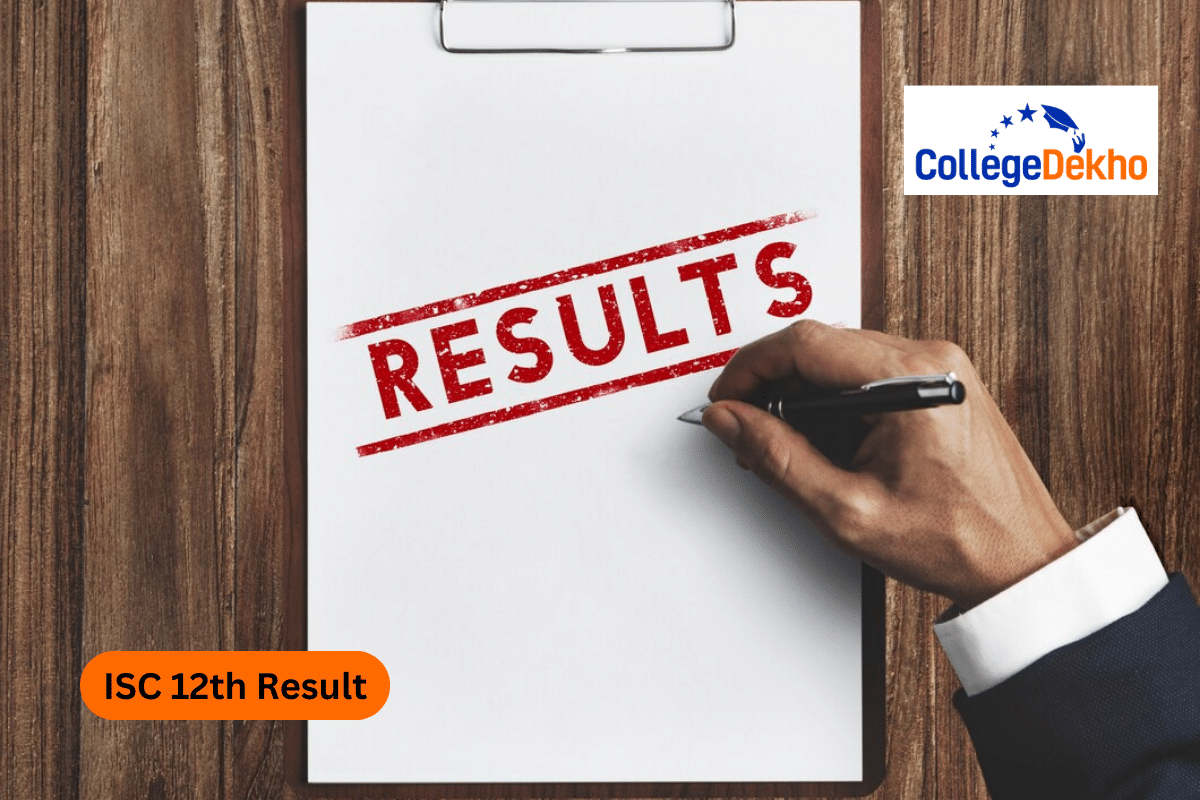RBSE Class 12 Physics Syllabus 2025-26 includes 14 chapters. The theory paper will be conducted for 56 marks, and 14 marks will be provided for internal assessment.


Never Miss an Exam Update
RBSE Class 12th Physics Syllabus 2025-26 is available on the official website of the Rajasthan Board of Secondary Education at rajeduboard.rajasthan.gov.in. The syllabus includes 9 units with 14 chapters. The following chapters are included in the Physics syllabus class 12 RBSE 2025-26: Electric Charges and Fields, Electrostatic Potential and Capacitance, Current Electricity, Moving Charges and Magnetism, Magnetism and Matter, Electromagnetic Induction and Alternating Currents, Electromagnetic Waves, Ray Optics and Optical Instruments, Wave Optics, Dual Nature of Radiation and Matter, Atoms and Nuclei, and Semiconductor Electronics: Materials, Devices and Simple Circuits.
Make sure to check the latest RBSE Class 12 Physics Exam Pattern 2026 before preparing for the exams. The theory paper will be conducted for 56 marks, and 14 marks will be provided for INA. The remaining 30 marks will be allotted for the practical paper. You are required to get the minimum passing marks in both papers to pass. Do not forget to practice the RBSE Class 12 Physics Model Papers 2026 for revision. Check out more information about the RBSE Class 12th Physics Syllabus 2025-26:
Physics Syllabus Class 12 RBSE 2025-26 PDF
You can download the PDF of the RBSE Physics Syllabus Class 12 2026 by clicking on the direct link given below:
RBSE Class 12th Physics Syllabus 2025-26
You can go through the detailed chapter-wise Class 12 RBSE Physics Syllabus 2025-26 as provided below:
Unit No. | Unit Title | Chapters / Topics Covered |
|---|---|---|
1 | Electric Charges and Fields | Introduction, Electric Charge, Conductors and Insulators, Basic Properties of Electric Charge — (Additivity of charges, Conservation of charge, Quantisation of charge), Coulomb’s Law, Forces between multiple charges, Electric Field — (Electric field due to a system of charges, Physical significance of electric field), Electric Field Lines, Electric Flux, Electric Dipole — (Field of an electric dipole: (i) On the axis (ii) On the equatorial plane, Physical significance of dipoles), Dipole in a Uniform External Field, Continuous Charge Distribution, Gauss’s Law, Applications of Gauss’s Law — (Field due to an infinitely long uniformly charged wire, Field due to a uniformly charged infinite plane sheet, Field due to a uniformly charged thin spherical shell). |
2 | Electrostatic Potential and Capacitance | Introduction, Electrostatic Potential, Potential due to a Point Charge, Potential due to an Electric Dipole, Potential due to a System of Charges, Equipotential Surfaces — (Relation between field and potential), Potential Energy of a System of Charges, Potential Energy in an External Field — (Single charge, Two charges, Dipole in an external field), Electrostatics of Conductors — (Zero field inside conductor, Normal field at surface, No excess charge inside conductor, Constant potential throughout), Electric Field at Surface of a Charged Conductor, Electrostatic Shielding, Dielectrics and Polarisation, Capacitors and Capacitance, Parallel Plate Capacitor, Effect of Dielectric on Capacitance, Combination of Capacitors — (Series, Parallel), Energy Stored in a Capacitor (Formula only). |
3 | Current Electricity | Introduction, Electric Current, Electric Currents in Conductors, Ohm’s Law, Drift of Electrons and Origin of Resistivity (Mobility), Limitations of Ohm’s Law, Resistivity of Various Materials, Temperature Dependence of Resistivity, Electrical Energy and Power, Cells, EMF, Internal Resistance, Cells in Series and Parallel, Kirchhoff’s Rules, Wheatstone Bridge. |
4 | Moving Charges and Magnetism | Introduction, Magnetic Force — (Sources and Fields, Lorentz Force, Force on a Current-Carrying Conductor), Motion in a Magnetic Field, Magnetic Field due to a Current Element — Biot–Savart Law, Magnetic Field on Axis of Circular Current Loop, Ampere’s Circuital Law, Solenoid, Force between Two Parallel Currents — The Ampere, Torque on a Current Loop — Magnetic Dipole (Rectangular Loop, Circular Loop as Magnetic Dipole), Moving Coil Galvanometer. |
5 | Magnetism and Matter | Introduction, The Bar Magnet — (Magnetic Field Lines, Bar Magnet as an Equivalent Solenoid – qualitative only, Dipole in Uniform Magnetic Field, Electrostatic Analogy), Magnetism and Gauss’s Law, Magnetisation and Magnetic Intensity, Magnetic Properties of Materials — (Diamagnetism, Paramagnetism, Ferromagnetism). |
6 | Electromagnetic Induction | Introduction, Experiments of Faraday and Henry, Magnetic Flux, Faraday’s Law of Induction, Lenz’s Law and Conservation of Energy, Motional Electromotive Force, Inductance — (Mutual and Self-Inductance), AC Generator. |
7 | Alternating Current | Introduction, AC Voltage Applied to a Resistor, Representation of AC Current and Voltage by Rotating Vectors (Phasors), AC Voltage Applied to an Inductor, AC Voltage Applied to a Capacitor, AC Voltage Applied to a Series LCR Circuit — (Phasor Diagram, Resonance), Power in AC Circuit — Power Factor, Transformer. |
8 | Electromagnetic Waves | Introduction, Displacement Current, Electromagnetic Waves — (Sources and Nature), Electromagnetic Spectrum — (Radio Waves, Microwaves, Infrared, Visible Light, Ultraviolet, X-rays, Gamma Rays). |
9 | Ray Optics and Optical Instruments | Introduction, Reflection of Light by Spherical Mirrors — (Sign Convention, Focal Length, Mirror Equation), Refraction, Total Internal Reflection — (Prism, Optical Fibres), Refraction at Spherical Surfaces and by Lenses — (Refraction at Spherical Surface, Power of Lens, Combination of Thin Lenses), Refraction through a Prism, Optical Instruments — (Microscope, Telescope). |
10 | Wave Optics | Introduction, Huygens’ Principle, Refraction and Reflection of Plane Waves using Huygens’ Principle — (Refraction at Rarer Medium, Reflection by Plane Surface), Coherent and Incoherent Addition of Waves, Interference of Light Waves and Young’s Double Slit Experiment (Formulae only), Diffraction (Qualitative Study Only) — (Single Slit and its Pattern), Polarisation. |
11 | Dual Nature of Radiation and Matter | Introduction, Electron Emission, Photoelectric Effect — (Hertz’s, Hallwach’s, and Lenard’s Observations), Experimental Study of Photoelectric Effect — (Effect of Intensity, Potential, and Frequency), Photoelectric Effect and Wave Theory of Light, Einstein’s Photoelectric Equation — Energy Quantum of Radiation, Particle Nature of Light — Photon, Wave Nature of Matter. |
12 | Atoms | Introduction, Alpha-Particle Scattering and Rutherford’s Nuclear Model — (Trajectory, Electron Orbits), Atomic Spectra, Bohr Model of Hydrogen Atom — (Formula for Radius of nth Orbit, Energy Levels), Line Spectra of Hydrogen Atom (Qualitative Only), de Broglie’s Explanation of Bohr’s Second Postulate. |
13 | Nuclei | Introduction, Atomic Masses and Composition of Nucleus — (Discovery of Neutron), Size of Nucleus, Mass-Energy and Nuclear Binding Energy, Nuclear Force, Radioactivity, Nuclear Energy — (Fission, Fusion, Energy Generation in Stars, Controlled Thermonuclear Fusion). |
14 | Semiconductor Electronics: Materials, Devices and Simple Circuits | Introduction, Classification of Metals, Conductors, and Semiconductors — (Based on Conductivity and Energy Bands), Intrinsic Semiconductor, Extrinsic Semiconductor — (n-type, p-type), p-n Junction — (Formation), Semiconductor Diode — (Forward and Reverse Bias), Applications of Diode as Rectifier. |
Also Read: RBSE 12th Physics Previous Year Question Papers
You are required to have detailed knowledge about the Class 12 RBSE Physics Syllabus 2025-26 to prepare for the exams efficiently. Make sure to only download the latest syllabus PDF as uploaded on the official website of RBSE to begin practicing.
Are you feeling lost and unsure about what career path to take after completing 12th standard?
Say goodbye to confusion and hello to a bright future!

FAQs
To pass the Physics Paper Class 12 RBSE, you are required to score 33% marks. Out of 70 marks allotted to the Physics paper, you are required to get 23 marks to pass in theory, and out of 30 in the practical paper, you are required to get 10 marks to pass.
You can visit the official website of the Rajasthan Board of Secondary Education to download the PDF copy of the latest RBSE Class 12th Physics Syllabus 2025-26. You can take the help of your teachers to get the latest syllabus.
According to the latest RBSE Class 12th Physics Syllabus 2025-26, the theory paper in Physics will be conducted for 56 marks, and 14 marks will be allotted for internal assessments. Apart from that, 30 marks will be provided for the practical papers.
RBSE Class 12th Physics Syllabus 2025-26 includes 14 chapters namely: Electric Charges and Fields, Electrostatic Potential and Capacitance, Current Electricity, Moving Charges and Magnetism, Magnetism and Matter, Electromagnetic Induction and Alternating Currents, Electromagnetic Waves, Ray Optics and Optical Instruments, Wave Optics, Dual Nature of Radiation and Matter, Atoms and Nuclei, and Semiconductor Electronics: Materials, Devices and Simple Circuits.
According to the latest RBSE Class 12th Physics Syllabus 2025-26, Chapter 9: Ray Optics and Optical Instruments and Electronic Devices holds the largest number of marks. The weightage for both of these chapters is 7 marks.
Was this article helpful?
























